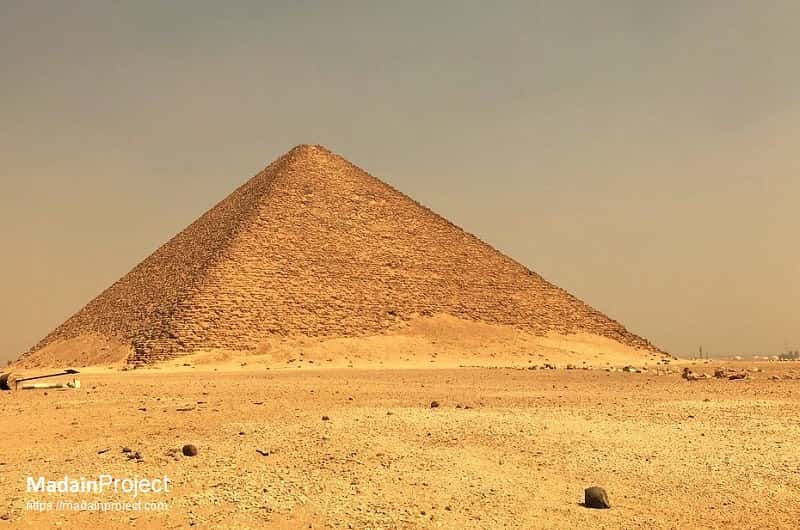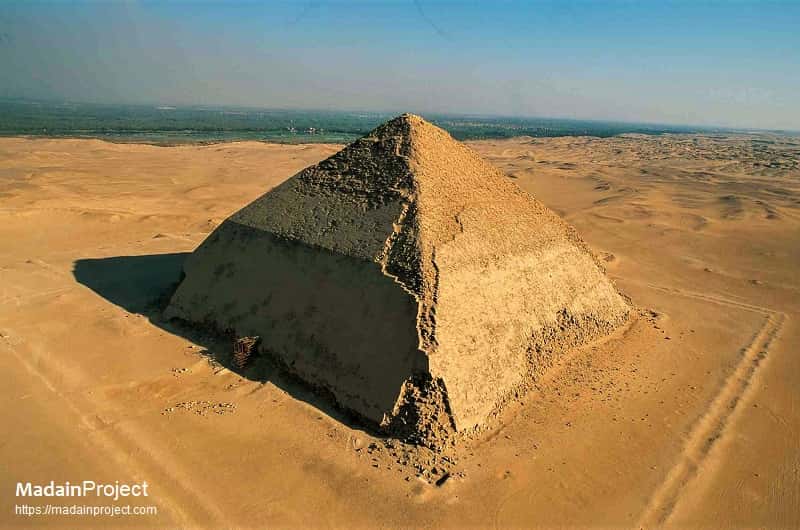Dahshur, an ancient royal necropolis located approximately 40 kilometers south of Cairo, is one of Egypt’s most significant archaeological sites. Serving as a burial ground for pharaohs primarily during the Old and Middle Kingdoms, Dahshur is home to some of the earliest and most well-preserved pyramids, including the Bent Pyramid and Red Pyramid of Sneferu (circa 26th century BCE). These pyramids mark a crucial transition in Egyptian pyramid construction, evolving from step-sided structures to true smooth-sided pyramids. Later, during the Middle Kingdom, pharaohs such as Amenemhat II, Senusret III, and Amenemhat III built their tombs here, further solidifying Dahshur’s role as a royal burial site. Excavations have revealed not only monumental architecture but also an extensive range of artifacts, including treasure-filled tombs of princesses, administrative buildings, and evidence of ancient settlement activity. Today, Dahshur remains a vital source of knowledge about Egypt’s evolving funerary practices, architectural innovations, and the political landscape of its early dynasties.
Established during the Old Kingdom (circa 27th century BCE), it became a crucial burial site for pharaohs seeking to construct monumental tombs away from the more crowded Saqqara. The site is most famous for its pyramids, particularly those built by Pharaoh Sneferu of the 4th Dynasty, which played a vital role in the evolution of pyramid construction in Egypt. His two pyramids, the Bent Pyramid and the Red Pyramid, represent the transition from step-sided structures to the smooth-sided true pyramids that culminated in the Great Pyramid of Giza.
During the Middle Kingdom (circa 21st–17th centuries BCE), Dahshur experienced a revival as pharaohs of the 12th Dynasty, particularly Amenemhat II, Senusret III, and Amenemhat III, chose the area for their pyramids. These later pyramids, constructed primarily from mudbrick with limestone casing, have not survived as well as their Old Kingdom counterparts. Nevertheless, they contain some of the finest examples of Middle Kingdom royal tombs, including elaborate burial chambers and vast treasure hoards discovered within. Notably, the discovery of exquisite jewelry in the tombs of princesses at Dahshur provides insight into the wealth and craftsmanship of the period.
By the New Kingdom (circa 16th–11th centuries BCE), Dahshur had largely fallen out of use as a royal burial ground, as Thebes and the Valley of the Kings rose to prominence. However, the site remained significant, with occasional burials and later reuse during the Late Period and even into the Greco-Roman era. Modern excavations have uncovered a wealth of information about not just the pyramid complexes but also the administrative structures, tombs of courtiers, and evidence of the workers who built these great monuments.
Today, Dahshur remains a critical archaeological site that continues to shed light on ancient Egyptian mortuary practices, architectural innovations, and shifting royal ideologies. Unlike Giza and Saqqara, Dahshur has remained relatively undisturbed, allowing for more intact discoveries. Its historical significance lies not only in its monumental pyramids but also in its role as a bridge between different phases of ancient Egyptian civilization.

The Black Pyramid is a ruined pyramid located in the Dahshur necropolis of Egypt, built during the reign of Amenemhat III of the 12th Dynasty (circa 19th century BCE). Unlike earlier pyramids constructed primarily from stone, the Black Pyramid was built using a mudbrick core encased in limestone, which contributed to its structural instability and eventual collapse. The pyramid originally stood approximately 75 meters (246 feet) high with a base length of 105 meters (344 feet). Read more

The Red Pyramid, built by Pharaoh Sneferu of the 4th Dynasty (circa 26th century BCE), is the largest pyramid at Dahshur and the world’s first successfully completed smooth-sided pyramid. Named for the reddish hue of its exposed limestone core, the pyramid originally stood at 105 meters (344 feet) high with a base of 220 meters (722 feet), making it the third-largest pyramid in Egypt after those of Khufu and Khafre at Giza. Constructed following the structural challenges of Sneferu’s earlier Bent Pyramid, the Red Pyramid represents a critical step in the evolution of pyramid design. Read more

The Bent Pyramid Funerary Complex, built during the reign of Pharaoh Sneferu of the 4th Dynasty (circa 26th century BCE), is one of the most distinctive pyramidal structures in Egypt. Located at Dahshur, the Bent Pyramid is notable for its unique shape, with its lower section rising at a steep 54-degree angle before abruptly shifting to a shallower 43-degree incline near the top. This change in design, likely due to structural instability, makes the Bent Pyramid a crucial example of the experimental phase in the transition from step pyramids to true pyramids. Read more
Signup for our monthly newsletter / online magazine.
No spam, we promise.